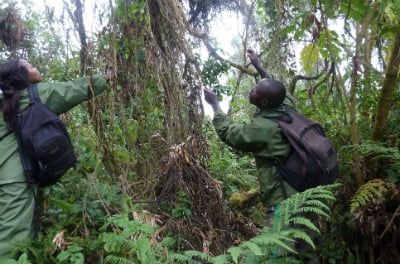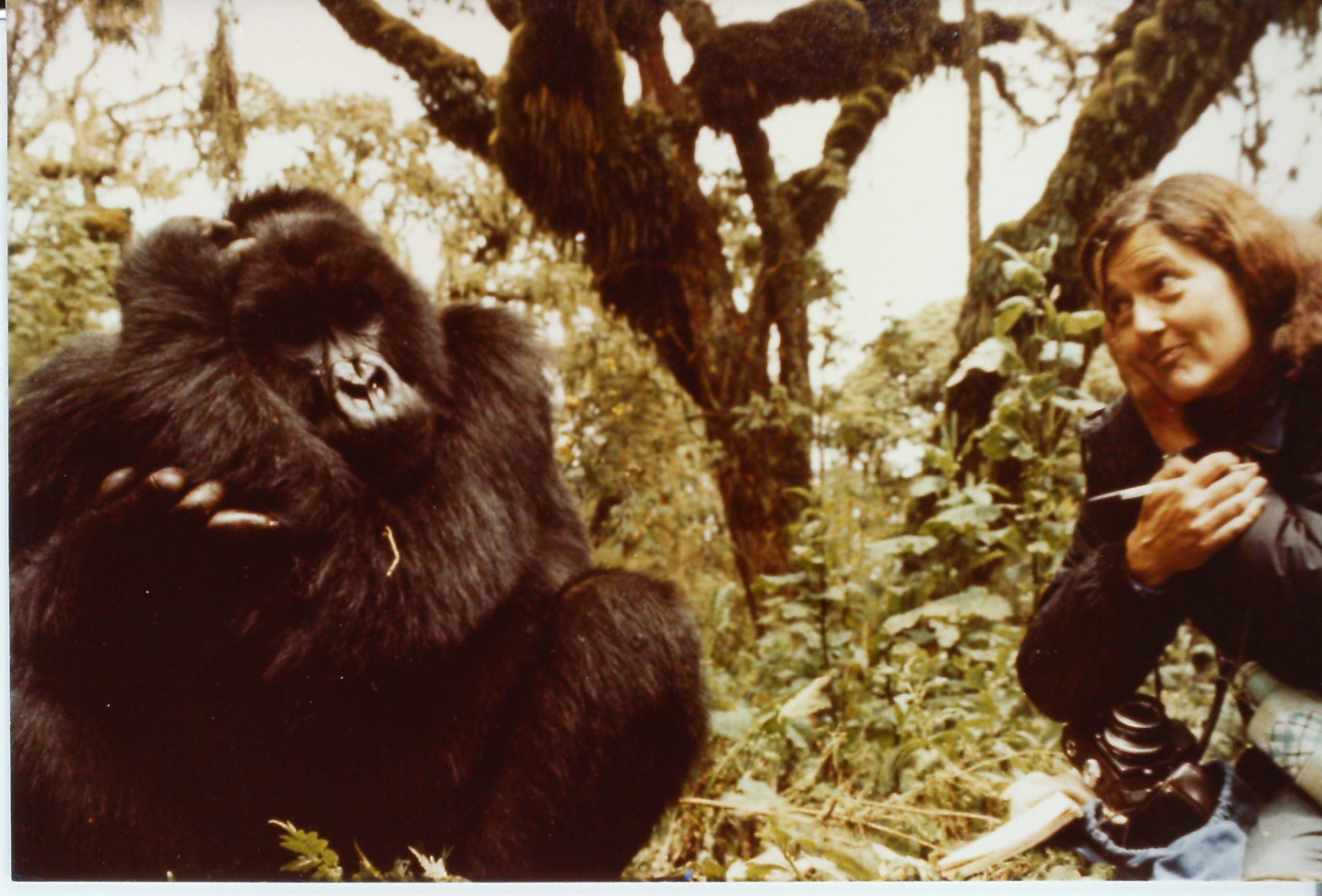August 16, 2013
Learning About Mountain Gorilla Food Plants Aids Gorilla Conservation
 In July, the Fossey Fund’s Biodiversity Monitoring and Research Program organized a botany field course for staff to review mountain gorilla food plant identification in Volcanoes National Park. The course was specifically designed for trackers and field data technicians, who collect data on mountain gorilla groups, and is also being attended by research assistants.
In July, the Fossey Fund’s Biodiversity Monitoring and Research Program organized a botany field course for staff to review mountain gorilla food plant identification in Volcanoes National Park. The course was specifically designed for trackers and field data technicians, who collect data on mountain gorilla groups, and is also being attended by research assistants.
The Fossey Fund organized a similar botany course in 2007, but in contrast to the earlier course, this one focuses on plant species eaten by gorillas and covers a wider range of gorilla habitat than had been covered previously. Gorilla Program Manager Veronica Vecellio described the species that make up the staple diet of mountain gorillas for the first round of the course, and rarer food plant species will be added as the participants become more comfortable with plant identification.
Many new field staff have been hired since 2007, and they have not yet had the opportunity to participate in formal, in-depth training like the current field course. The trackers were excited to participate in this course, which promised to improve their accuracy and increase their confidence in collecting data. Data technician Joseph Mutabazi, who works in Ntambara’s group, said, “I was hired in 2009. Since then, I didn’t have any scientific training on plants eaten by gorillas, so I used to ask my team members [about them].”
The training was useful not only in refreshing plant identification techniques, but also in reminding field staff of the scientific names for the plants to better standardize the data collected. Mutabazi said, “We used to hardly know the scientific names, so either we memorized the plant codes given by senior researchers or we knew the common [vernacular] names, which don’t help much in terms of field data collection.”
The field course has been well received by the trainees, but it has also been an exciting endeavor for the organizing staff, who consider it a milestone of sorts. Deogratias (Deo) Tuyisingize, the Biodiversity Program manager, explained: “This is the first training organized by the Fossey Fund staff themselves without external support, because all the materials — including books, specimens, and microscopes — and the knowledge needed for the course were in our hands.” Tuyisingize and Olive Izabayo, a research assistant in the Biodiversity Program with a background in botany, prepared the training materials and are the key trainers for the program.
Each team of trackers is taken in groups of four or five to the forest. There, they focus on the specific areas where their gorilla groups most often range. During their time in the field, they practice noting whenever they encounter a gorilla food plant species. After an hour, the group sits together and exchanges the day’s experiences, giving the trainer the opportunity to correct any mistakes that were made in identifying plants along the way. The group learns key differences between often confused gorilla plant species and easily observed characteristics, like the leaf shape and whether or not plants have flowers or fruits, that they can use as tips to help them remember the species later.
Izabayo, who has been leading groups in the field, says, “From the past field training rounds, trainees were remembering about 50 percent of gorilla food plant species that were found on the list Gorilla Program Manager Veronica Vecellio provided, but mostly only by their genus or vernacular names. It is important to repeat the training several times till every participant can recognize at least 90 percent of the gorilla food plant species and use the species’ full scientific names.” After the field component of the course is over, all the trainees will gather together at the office to use the resources of the Fossey Fund herbarium, library and plant photo collection and to test their knowledge.
The participants seem to be getting a lot out of this field course. Jean Bosco Ntirenganya, a data technician in Pablo’s group, said “For the first round [of field sessions], we went to the lower altitude, in the bamboo and hagenia zones. For the next round, we would like to start from the mountain tops where Pablo’s group spends some time. The plants that are found there are hard to identify and are physically different from lower-altitude plants.”
Being able to identify the vegetation composition where gorillas range and the plants on which gorillas are observed feeding is essential to manage and protect their habitat effectively. Understanding how gorillas use their habitat is the best way to tailor park management practices that allow the population to continue to grow and thrive. The Biodiversity Program hopes to be able to offer the field course regularly as a long-term activity, so that any newly recruited staff members will have an opportunity to participate, and staff with difficulties or questions about animal-plant interactions will have an established opportunity to obtain answers.






